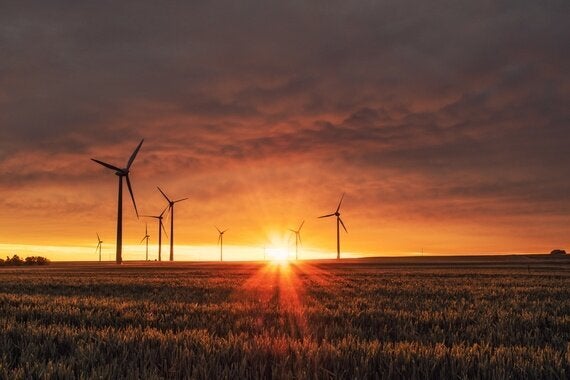[COPYRIGHT FREE PHOTO FROM UNSPLASH: https://images.unsplash.com/photo-1466611653911-95081537e5b7?ixlib=rb-0.3.5&q=80&fm=jpg&crop=entropy&s=5b68f0e705879d7bc2adea419c34a8a5]

Energy decision making in many developing countries is on a fine balance between going all out for investment in fossil fuels, adopting a western industrialisation pathway, and becoming trail blazers for a renewable energy future delivering energy for all. But how will this decision be made, and what influences the choice?
Last summer Christian Aid with the Overseas Development Institute reviewed energy investment and decision making in 6 developing countries across Asia, Africa and South America. In December five of these countries presented their nationally determined commitments (NDCs) at the UN climate negotiations in Paris to take a lower carbon direction - only Nicaragua opted out of the NDC process. The contract between the energy trends in each country and what was proposed in Paris makes interesting reading, highlighting the pull between governments wanting to tackle climate change head on, and the readily availability of foreign investment into fossil fuels. Christian Aid's report Tipping the energy balance: energy investment trends in developing countries presents this analysis and discusses the drivers which could tip investment towards a lower carbon future.
All of the countries in the review - Bangladesh, Bolivia, Cambodia, Kenya, Malawi and Nicaragua - have high levels of energy poverty with millions of people without electricity and cooking on open wood or charcoal fires. Each has a growing urban and industrial need for energy. But each also has an abundance of renewable energy resources which could effectively be tapped for future development.
So who are the big influencers?
Without a doubt a proactive government which embraces renewable energy is a key factor in drawing in low-carbon investors. Bangladesh has a rapidly expanding market for solar photovoltaic systems, and in its NDC has set aggressive targets to scale up the potential of solar irrigation pumps, and solar home systems to begin to serve the off-grid population. The fact that finance from international funders, such as the World Bank and the UK government have triggered investment into low-carbon energy, especially for household solar power, has meant that the private sector is much more interested in this because of funding availability. But when there is foreign direct investment being made available for coal power nationally, how can an energy starved country such as Bangladesh say no?
Even the most progressive renewable energy countries - such as Kenya which is making huge advances with geothermal, wind and solar - find it difficult to resist the investors who circle a country when oil and gas has been found.
Chinese investment is increasingly playing a role in influencing energy decision makers. It is for example likely to play a significant role in fossil fuel expansion in Cambodia, a country which had very optimistic renewable energy ambitions in its NDC.
In Bolivia Christian Aid's partners Centre for Labour and Agricultural Development (CEDLA) are concerned that local people's human rights have been violated where exploitation of hydrocarbons has taken place and public investment in the large exploitation of natural resources leads to corruption and inefficiencies in the way public money is spent. But in Paris Bolivia committed to a big increase in renewable development, while ensuring universal energy access.
We cannot overlook the role of the multi-lateral development banks (MDBs), including the World Bank and the big regional development banks. To attract the financial support on which they rely, countries can be tempted to adjust national policy and legislation, for example to comply with donor standards for development aid. Such changes show the potential for donors to influence internal policy making processes. Christian Aid's partner organisation Centro Humboldt in Nicaragua told us: 'International funding sources are thought to have a high level of influence as investments in energy are usually financed through loans from the World Bank, the Inter-American Development Bank and the IMF, as well as private investment from large foreign companies.'
Paris set us on course for a low-carbon future, which must be pursued relentlessly with every means available to keep the world safe from climate change. Developing countries have to make their own decisions. But to make the low-carbon route attractive and viable, there needs to be a huge counter balance to the fossil fuel industry through the wide spread provision of affordable and accessible low-carbon investment. This will need a pulling together of MDBs, climate finance and progressive private investment to lead the way in delivering the visions set out in the NDCs.
It will take a huge amount of political will to bring about a radical change in energy investment strategies across the globe, particularly from wealthier nations who invest in developing countries. Renewable and low-carbon energy generation technologies are becoming less costly and studies show that in the long term, switching investment to these types of ventures will make economic as well as climate sense. The time is right to tip the energy balance but it needs governments to make the first push.